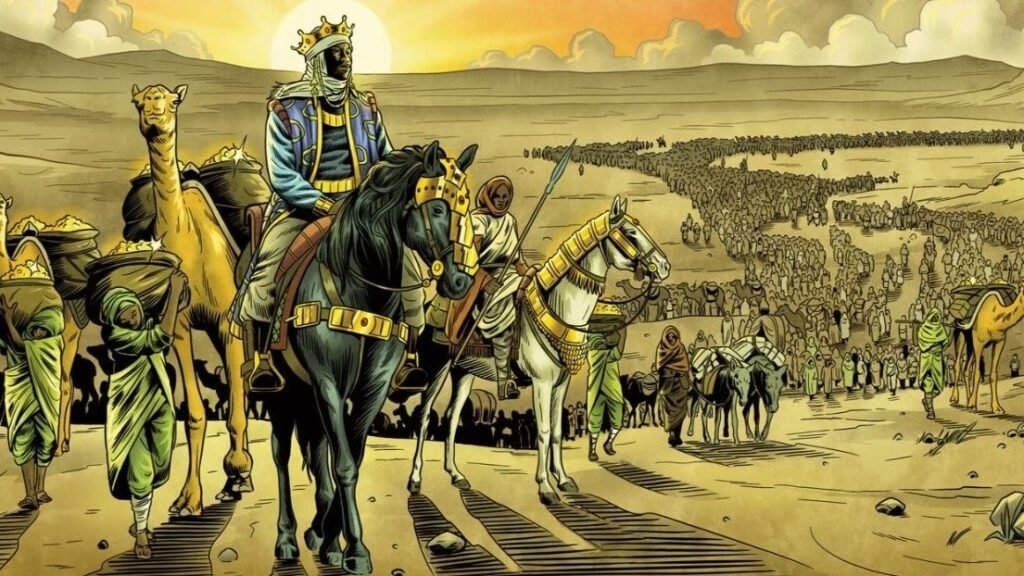Across deserts and deltas, palaces and pyramids, from the shimmering myths of antiquity to the malls of Dubai, one metal has captured the human imagination like no other. Gold—sun-bright, incorruptible, and endlessly alluring- has not merely been a store of value. For some civilizations, it’s been a way of life.
To many of us in the modern world, gold is a hedge against inflation, a glimmering necklace, or a dispassionate bar locked in a central bank. But for certain societies, historical and contemporary, gold is more than wealth: it is identity, religion, politics, and even a kind of everyday poetry. Here’s a deep dive into the people and places where gold isn’t just an asset, but a foundational truth.
Gold as Divinity: The Ancient Egyptians and Their Eternal Shine
If you had lived in ancient Egypt and dared to call gold merely “valuable,” you would have been laughed out of the Nile valley.

To the Egyptians, gold was the flesh of the gods, a substance not of this Earth, but of the heavens. The sun god Ra was thought to radiate golden light, and pharaohs were considered his earthly avatars. Naturally, their tombs were decked in opulent gold artifacts: masks, amulets, sarcophagi, chariots. Tutankhamun’s burial mask alone, crafted from 24 pounds of solid gold, still hypnotizes modern viewers behind bulletproof glass.
Yet, curiously, the Egyptians didn’t use gold as everyday currency. Silver, scarcer in Egypt, held greater monetary utility. Gold was too sacred to sully in the sweaty business of marketplaces. Instead, it functioned as diplomatic currency. Gold was Egypt’s trump card in international relations, presented to foreign dignitaries as tribute or alliance offerings. The mines of Nubia, known as “Ta-Seti” or the Land of the Bow, were plundered for their inexhaustible golden veins, and the Egyptian treasury sparkled accordingly.
The legacy? Egypt’s aesthetic of golden abundance shaped its mythical image in the global consciousness. To this day, we associate its ancient culture not with scarcity, but with shimmer.
The Empire That Made Mecca Gasp: Mali and the Gold of Kings
Fast forward to 14th-century West Africa, and meet Mansa Musa. Arguably the richest man to ever live. He ruled the Mali Empire, which straddled the golden seams of the Niger River, controlling trade routes that funneled unimaginable quantities of gold northward to the Mediterranean and beyond.

When Musa made his pilgrimage to Mecca in 1324, he traveled with 60,000 attendants, 100 camels each bearing hundreds of pounds of gold, and a generosity that nearly collapsed local economies. Cairo, for example, suffered hyperinflation for a decade after his visit, thanks to the sheer volume of gold he injected into its market.
In Mali, gold wasn’t just a medium of wealth, it was the bedrock of civilization. It lubricated trade across the Sahara, bought books for Timbuktu’s libraries, and encrusted the regalia of rulers. Gold dust was used in daily transactions, carried in pouches or carefully weighed by merchants. Goldsmiths were artisans and alchemists of status.
The Mali Empire’s golden age didn’t just enrich its own people; it shifted global perceptions. European cartographers started placing Mali on maps with golden crowns. Timbuktu became shorthand for opulence and mystery. The empire’s golden glow echoed far beyond Africa.
The Gilded Mythos of the Americas: The Incas and Aztecs
The indigenous civilizations of the Americas treated gold with a reverence that bewildered their European conquerors.
To the Incas, gold was “the sweat of the sun,” an offering to the divine rather than a currency for trade. In Cuzco, temples shimmered with golden panels, and ceremonial objects were cast in brilliant forms, llamas, maize, disks. It was beauty, not banking.
Similarly, the Aztecs viewed gold as spiritually potent. The Spanish, of course, had a more utilitarian view. When Hernán Cortés arrived in Tenochtitlán and saw its gold-laden temples and markets, he saw only plunder. As legend goes, Montezuma handed over golden gifts hoping to appease the conquistadors; instead, he merely whetted their appetite. The result? A bloody conquest and an avalanche of New World gold poured into Spanish treasuries, fueling Europe’s colonial ambitions for centuries to come.

Ironically, what the indigenous peoples saw as sacred ornamentation, the Spanish saw as coinage. The cultural clash was as much philosophical as it was military.
Gold in the 21st Century: Bling, Bullion, and Beyond
Today, we may live in the age of cryptocurrency and contactless payments, but gold hasn’t lost its luster, especially in certain corners of the modern world.
India: Gold as a Living Tradition
Nowhere is gold more deeply woven into the social fabric than in India, where it serves as dowry, devotional offering, and status symbol, all in one. India is the world’s largest consumer of gold, not because of Wall Street speculation, but because of weddings. A bride draped in gold is not merely adorned; she is protected, respected, and elevated.
In many rural parts of the country, gold jewelry functions as wearable savings, tradable in times of need. Women are often the custodians of family gold, making it an unusual form of matriarchal financial power. Diwali and Dhanteras (the festival of wealth) see millions flock to jewelry stores in a national ritual of golden optimism.

This cultural fixation has a tangible economic impact: India’s gold imports influence global prices, and the country’s informal economy often runs parallel to its glittering stockpile of private holdings.
Dubai: Gold as Performance Art
In Dubai, gold isn’t just worn, it’s flaunted. The city boasts ATMs that dispense gold bars, souks with 24-karat gowns, and skyscrapers with gold-plated interiors. Here, gold is not merely economic insurance; it’s aesthetic aggression.
Much of Dubai’s gold is imported, refined, and re-exported in a dazzling loop of global trade. The city’s cultural openness to ostentation turns gold into a kind of social theatre. Want a cappuccino topped with edible gold leaf? Dubai has you covered.
Gold’s Double-Edged Legacy
Gold, for all its brilliance, has a darker side. Its pursuit has fueled wars, colonization, environmental degradation, and economic disparity. Yet its symbolic power endures—rooted not just in scarcity, but in psychology.
For the cultures that embrace it, whether as sacred symbol, family heirloom, or monetary standard, gold serves a deeper function. It crystallizes the abstract: love, loyalty, legacy, divinity. It captures light in metal form. And for some societies, it is not just a possession—it is a principle.
So the next time you see someone shimmering in gold, don’t just see wealth. See history, identity, and the ancient promise of permanence in a fleeting world.


